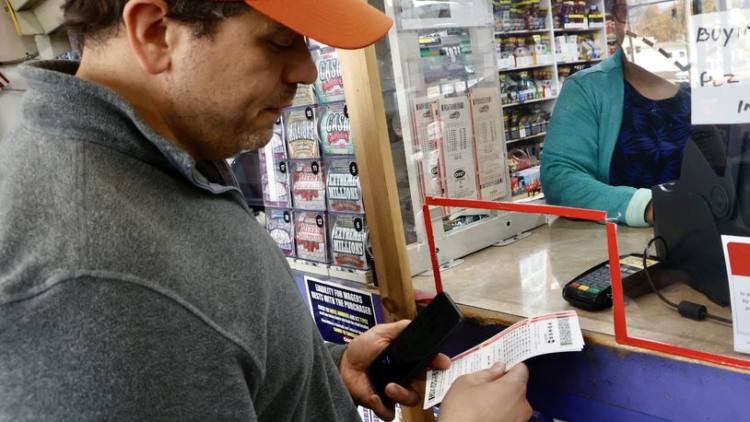For the 39th draw in a row, the Powerball jackpot eluded participants on Wednesday night.
Dreams of winning the world’s largest-ever lottery jackpot are fueling a “nonstop” Powerball frenzy of ticket sales across the nation.
“Everybody’s wanting a piece of it,” said Hiral Kumer, owner of the Plum Food Mart in Springfield (Photo Image). “We’ve been selling like nonstop. … It starts in the morning until we close.”
The five white ball numbers (2-11-22-35-60) and red Powerball number 23 were not included in any of the more than 150 million tickets that were sold for Wednesday night’s drawing. The Powerball prize then continues to grow for the upcoming drawing of the national lottery this Saturday, November 5.
This weekend’s drawing is expected to have a $1.6 billion jackpot, with a $746 million cash option. The Powerball reward would be the third-largest prize ever offered in US lottery history, and the second-largest jackpot in Powerball history, at $1.5 billion.
Only twice in history has a lottery jackpot worth more than $1.5 billion been up for grabs: in January 2016 when three winners split a $1.586 billion Powerball haul, and in October 2018 when a single player won a $1.537 billion Mega Millions jackpot.
The jackpot is raised by inflation.
The jackpot is approaching the all-time US lottery record thanks to the Powerball frenzy. The game is also getting close to ending its longest drought without a jackpot.
The number of Powerball drawings without a jackpot winner now stands at 41. The record was recently set when a Californian was anticipating receiving a $699.8 million reward on the 41st drawing on October 4, 2021.
Why then is the jackpot sum increasing more quickly this year? There are a few explanations.
Americans have seen large declines in their retirement and savings accounts over the past year, which has led some to try their luck with a $2 lottery bet in an effort to turn around their recent financial fortunes. The purchasing power of the money that Americans do have is declining due to record inflation and a decline in the Dow Jones Industrial Average of 11.5% over the past 12 months.
However, the way the federal government is reacting to the inflation spike is a major factor in the jackpot value soaring.
The Federal Reserve raised interest rates by a further three-quarter points on Wednesday, bringing them to their highest level since January 2008. Due to the fact that the 2022 Powerball jackpot will be paid out in full over a 30-year annuity, it has already surpassed the prize from last fall.
The jackpot for Powerball is advertised by the Multi-State Lottery Association (MUSL), which manages the game, depending on the total amount of the 30-year allotment. The prize money is put into a Treasury bond portfolio by MUSL. The Powerball jackpot’s worth is growing more quickly than it did a year ago as a result of the ongoing rise in interest rates for those investment vehicles.
According to Bret Toyne, executive director of MUSL, “although some businesses can suffer from higher interest rates, for lottery games that offer annuities for the rewards, it is more of a tailwind.”
Calculating Payments
The crucial decision for Powerball winners is whether to choose the one-time cash option or the entire value of the jackpot over 30 years. There is a 37% effective federal tax on both choices.
Major lottery winners have typically chosen the cash option, but with interest rates skyrocketing in the Federal Reserve’s bid to stop inflation, the choice may not be as straightforward as it once was.
According to Toyne, who spoke to the WSJ, 34% of every $2 Powerball ticket is allocated to the jackpot, while 16% is used to pay for secondary prizes. The remaining 50% goes toward running expenses, commissions, and nonprofit initiatives from which the organizations gain.
After federal taxes are deducted, the jackpot winner who chooses the cash option gets the money. If they decide on an annuity, they start getting their first of 30 yearly payments right away. The money would next be placed in government interest-bearing bonds to cover the remaining 29 payments.

